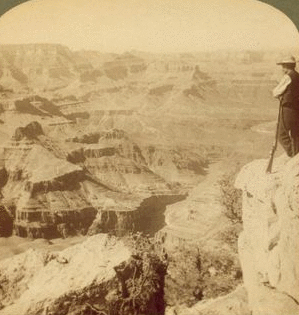
ASU's Daniel Sarewitz asks in his
monthly column in
Nature, why mission-directed science agencies such as the USGS, lag so far behind in funding compared to basic research agencies like NIH and NSF, whose budgets have doubled or tripled. Since 1996 (16 years ago), the USGS budget has risen 16%, not even keeping up with inflation.
Dan argues that "it wasn't supposed to be this way. America's pragmatic culture has long been assumed to favour applied investigation over fundamental science..."
After all, "Mission agencies provide knowledge — fundamental and applied — to address social problems as diverse as preventing and preparing for natural and technological disasters, providing the scientific basis for environmental monitoring and protection, dealing with public-health threats such as obesity and emerging infectious diseases, and developing the standards and measures that facilitate technological innovation."
He ascribes part of the problem to the support for science funding comes mainly from those engaged in basic rather than applied science - universities, the National Academies, the professional scientific societies and so on.
I have to agree. Universities increasingly rely on federal funds to operate. The University of Arizona for example gets something like only 30% of its revenues from the State. So, every VP of Research and Dean of Science across the country pounds on the desks of their congressional rep, arguing for more funding of NSF and NIH, because those agencies are mostly funding sources.
The USGS on the other hand, holds onto its money tightly, arguing they don't have funds to carry out their own core missions, so how could they possibly share any with other groups. As a result, the USGS doesn't have the same kind of stakeholder advocacy as do the basic science agencies.
In 2008, a group of prominent scientists
proposed merging the USGS and NOAA to create an Earth Systems Science Agency. A key element of the ESSA would be that "No less than 25% of ESSA's budget should be devoted to grants, contracts, and cooperative agreements with academic and nonprofit institutions." Clearly, they recognized the need to build a politically powerful constituency.
It will be of great interest to all of us to see if the President's proposal to move NOAA from Commerce to Interior will also include a change in philosophy on how funds are spent by the agencies.
















































